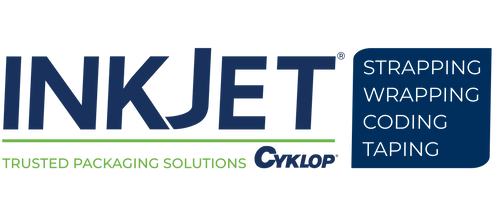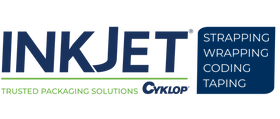3 Important Considerations for Printing on Plastic Containers | InkJet, Inc.
When it comes to modern product packaging, plastic is an essential material. Experts estimate that manufacturers created 40.4 million tons of plastic containers in 2020. Commonly utilized as bottles, boxes, and jugs, plastic containers are valued for their cost-effective nature, versatility, and durability. However, plastic containers don’t automatically come prepared for consumer use.
Regardless of whether you’re using plastic to house food products, beverages, cosmetics, or chemicals, both distributor standards and federal regulations require the use of industry-specific markings on packaging. Commonly in the form of batch numbers, barcodes, and data matrices, these markings fulfill multiple purposes, including:
-
Enabling product tracking and reporting
-
Educating consumers
-
Preventing counterfeit merchandise
-
Powering the retail process
As with any industrial marking application, successfully printing on plastic containers requires a close examination of certain details. The shape of the container, workplace conditions, and the specific type of plastic all impact coding results. If one doesn’t properly account for these elements, it can render codes unreadable, possibly leading to larger issues along the supply chain.
To avoid complications when printing on plastic containers, consider the following factors:
Be Mindful of Curvature
Plastic containers can take on a wide variety of shapes. While flat-surfaced plastic boxes are prevalent across several industries, many container forms are also designed with dramatic curves. Soda bottles, PVC pipes, and chemical jugs are all commonly used containers and each one is subject to direct marking, whether that be formatted as an:
-
Expiration date
-
Lot number
-
Barcode
-
Serial number
-
Part number
Each of these markings plays an important role in fostering traceability and complying with industry regulations. However, for these codes to work as intended, one needs to accommodate the substrate’s curved surface. This requires the proper hardware.
Continuous inkjet (CIJ) printers have no issue with marking both flat and curved surfaces due to their contact-free printing method. Using piezoelectric printheads and uninterrupted streams of ink, CIJ printers offer printing distances of up to 1”. This range allows them to mark curved surfaces in a clear, uniform manner without the need for rotating the substrate.
Laser marking systems are well-built for curved surfaces as well. Like CIJ printers, scribing laser printers (e.g. Fiber laser and CO2 laser systems) utilize contact-free marking methods to place codes onto product surfaces.
Depending on the specific make and model of the laser system, this marking distance can range from around half an inch to more than a foot giving operators the ability to mark curved surfaces with ease. In addition, many laser printers are built with easily-adjusted marking heads further expanding their compatibility with traditionally difficult substrate shapes.
Use a Printer that Meets Your Production Needs
Today’s industrial printer market contains countless machines. Each of these printer models has strengths and weaknesses. Whether or not a certain printer will work for a company largely depends on operational requirements.
For example, plastic containers are often marked on quick-moving production lines. These lines run continuously all day, generally at hundreds of feet per minute. The environmental conditions of industrial facilities can also pose problems related to heat, cold, humidity, and dust. To avoid periods of downtime, companies must utilize printers that fit their needs.
CIJ printers like the DuraCode Touchscreen and DuraCode Keyboard meet high-speed demands by offering nonstop printing speeds up to 1050 ft/min (320 m/min). The printers’ IP55 stainless steel structures also protect against dust, humidity, and other potentially harmful environmental elements. For companies that don’t need the high speeds offered by CIJ models, thermal inkjet (TIJ) printers provide a more compact and cost-effective option.
Of course, having the best printer is useless if you aren’t using the appropriate ink for the application.
Utilize the Right Ink for the Plastic Type
The world of plastics is large, diverse, and filled with a variety of materials. Plastic types range from lightweight materials like polyethylene terephthalate (PET) to strong construction materials like polycarbonate (PC). With this difference in mechanical properties naturally comes a difference in surface properties as well.
Ink formulas are successful when their characteristics work well with the substrate. Mismatched inks can lead to:
-
Low Contrast Codes: If codes are applied with suboptimal ink, it can lead to a lower overall DPI. Low DPI barcodes and data matrices can become unreadable by scanners.
-
Poor Ink Adhesion: Codes are made to last, and longevity is impossible if the ink can’t properly adhere to the substrate. When ink doesn’t dry well, characters become hard to read and are easily susceptible to physical damage.
To create durable, highly legible codes, companies need to understand the scope of their plastic printing, including which specific types of plastic they will be printing on. With this information, businesses can find ink formulas that will work well with their substrates.
Make Printing on Plastic Containers Simple with InkJet, Inc. Technology
Between accommodating surface shapes, determining internal operation requirements, and understanding the properties of different plastic types, plastic printing can appear overwhelming. With the right tools and team behind you, it doesn’t have to be.
The team here at InkJet, Inc. has been developing custom printing solutions for over thirty years. Our industry experts know exactly which ink formulas excel with different plastics and understand which printers best perform certain tasks. Whether you need to mark a line of PVC pipes or code hundreds of soda bottles moving at high speeds, InkJet, Inc. can help you find the perfect solution.
For more information related to printing on plastic containers, or to inquire about our comprehensive printing solutions, contact InkJet, Inc. online or by phone at 1(800) 280-3245.



